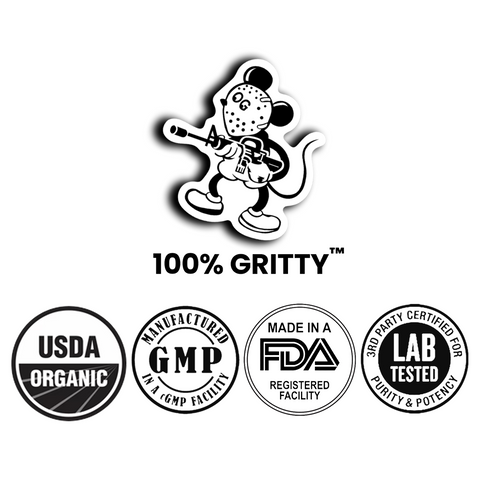Cannabis is a complex plant that contains hundreds of chemical compounds known as cannabinoids. Two of the most well-known cannabinoids are CBD (cannabidiol) and THC (tetrahydrocannabinol). While these compounds have garnered significant attention for their individual effects, emerging research suggests that their combined action may produce synergistic effects known as the entourage effect. In this article, we will explore the entourage effect, examining how CBD and THC work together to potentially enhance therapeutic outcomes and broaden our understanding of cannabis-based therapies.
Understanding CBD and THC
CBD (Cannabidiol): CBD is a non-intoxicating cannabinoid that has gained immense popularity due to its potential therapeutic benefits. It interacts with various receptors in the endocannabinoid system (ECS), modulating processes such as pain perception, mood regulation, and inflammation. You can read more about how CBD works in our blog post here.
THC (Tetrahydrocannabinol): THC is the primary psychoactive compound in cannabis responsible for the "high" associated with marijuana use. It binds to cannabinoid receptors in the brain and central nervous system, influencing cognition, memory, and appetite.
The Endocannabinoid System (ECS)
To understand the entourage effect, it is essential to grasp the role of the ECS. The ECS is a complex network of receptors, endocannabinoids (cannabinoids produced by the body), and enzymes. It plays a vital role in maintaining homeostasis and regulating various physiological processes. CBD and THC interact with the ECS in different ways, affecting its functioning and influencing overall health and well-being.
The Entourage Effect
The entourage effect refers to the synergistic interaction between various components of the cannabis plant, particularly CBD and THC. It suggests that when consumed together, the compounds may produce enhanced therapeutic effects compared to using them individually. The entourage effect is believed to arise from the combined action of cannabinoids, terpenes, flavonoids, and other compounds present in cannabis.
Mechanisms of the Entourage Effect
Enhanced Activation of Receptors: CBD may modulate the activity of cannabinoid receptors, potentially increasing the binding affinity of THC to these receptors. This interaction may amplify the effects of THC, leading to a more pronounced therapeutic response.
Altered Enzyme Activity: CBD has been shown to inhibit the enzymes responsible for breaking down THC, such as cytochrome P450. By inhibiting these enzymes, CBD can prolong the presence of THC in the body, potentially increasing its bioavailability and enhancing its effects.
Influence on Non-Cannabinoid Receptors: CBD and THC may also interact with non-cannabinoid receptors, such as serotonin and vanilloid receptors. These interactions may contribute to the entourage effect by influencing various physiological processes beyond the ECS, including pain perception, mood regulation, and inflammation.
Therapeutic Applications
The entourage effect holds promise for a wide range of therapeutic applications. Some potential areas where CBD and THC in combination may have enhanced effects include:
Pain Management: Combining CBD and THC may result in more potent analgesic effects, potentially alleviating chronic pain conditions such as neuropathic pain, fibromyalgia, and multiple sclerosis-associated pain.
Neurological Disorders: The entourage effect may play a role in the treatment of neurological disorders, including epilepsy, Parkinson's disease, and Alzheimer's disease. Studies suggest that combining CBD and THC may provide better seizure control and neuroprotective benefits compared to using either compound alone.
Mental Health: CBD and THC in combination may have potential applications in mental health conditions such as anxiety disorders, depression, and post-traumatic stress disorder (PTSD). The entourage effect may enhance the anxiolytic and antidepressant effects of CBD and reduce the potential adverse psychoactive effects of THC.
Finding the Right Balance: It is important to note that the entourage effect is highly dependent on the ratio of CBD to THC and the individual's response to these cannabinoids. Different strains of cannabis and CBD products may contain varying ratios, and finding the optimal balance for specific conditions may require individual experimentation and consultation with healthcare professionals.
The Bottom Line
The entourage effect highlights the potential synergy between CBD and THC in producing enhanced therapeutic effects. By working together, these cannabinoids may modulate various physiological processes and offer benefits for conditions such as pain management, neurological disorders, and mental health conditions. However, it is crucial to note that individual responses to CBD and THC may vary, and finding the right balance is essential for optimal therapeutic outcomes.
As research on the entourage effect continues to evolve, further understanding of the complex interactions between cannabinoids and other compounds in cannabis will contribute to the development of more targeted and effective cannabis-based therapies.
References
Russo, E. B. (2011). Taming THC: Potential cannabis synergy and phytocannabinoid-terpenoid entourage effects. British Journal of Pharmacology, 163(7), 1344-1364.
- Gallily, R., et al. (2018). Overcoming the bell-shaped dose-response of cannabidiol by using cannabis extract enriched in cannabidiol. Pharmacology & Pharmacy, 9(2), 75-85.
- Pamplona, F. A., et al. (2018). Potential clinical benefits of CBD-rich Cannabis extracts over purified CBD in treatment-resistant epilepsy: Observational data meta-analysis. Frontiers in Neurology, 9, 759.
- Russo, E. B. (2019). The case for the entourage effect and conventional breeding of clinical cannabis: No "Strain," no gain. Frontiers in Plant Science, 9, 1969.
- Baron, E. P. (2018). Medicinal properties of cannabinoids, terpenes, and flavonoids in cannabis, and benefits in migraine, headache, and pain: An update on current evidence and cannabis science. Headache: The Journal of Head and Face Pain, 58(7), 1139-1186.





Comments (0)
There are no comments for this article. Be the first one to leave a message!